Writing Notes: Outline
Writing Notes: Outline

Outline - a skeletal representation of the sequence of the main ideas in your essay.
The sequence of ideas/topics also serves as a guide for the reader(s) of your paper.
2 Purposes of an Outline
For You as a Writer (this is the “working outline”)
You may draft a working outline in order to organize the sections of your paper as you list the major ideas/topics you plan to discuss.
You may add minor topics and supporting details as your research continues.
In the research and drafting processes, you may need to revise the information included in your working outline as new information comes to light.
For Your Instructor (this is the “final outline”)
The most important aspect of the final outline is that it is truly representative of your actual paper.
If a topic is in your outline but not adequately discussed in your paper, revision is necessary.
To serve as a guide for the reader, the final outline must accurately reflect the content of your paper.
About the Working Outline
The working outline does not need to be written in any specific format.
It is for your own use, an informal rough draft of tentative information that you may use or discard later.
You may write a working outline in whatever form seems most helpful for you.
By the time you have finished your research and begun your paper, you should have a nearly complete outline to edit and use as your final outline.
About the Formal Outline
The standard format for a formal outline includes large Roman numerals for the main headings, capital letters for subtopics and Arabic numerals for the sub-subtopics.
To find specific information regarding correct spacing and alignment, consult your university's handbook.
Example
OUTLINE
Thesis Statement: There are benefits as well as drawbacks to purchasing a home.
I. Benefits of purchasing a home
A. Financial investment B. Personal privacy
II. Drawbacks to purchasing a home
A. Financial commitment B. Costly maintenance
Things to Consider About Outlines
Thesis Statement
Most outlines begin with the thesis statement, aligned to the left and placed directly below the heading (Title) of your outline.
Sentence Outline OR Topic Outline
Consistency is the key to writing your outline.
If your outline is in sentence form, all parts of it (major topics, minor topics, supporting details) must be in sentence form.
If your outline is written in words, and phrases, all of it must be in that form.
The main point to remember is that your outline will be one or the other, all sentences or all words and phrases, not a combination of both.
Paired Headings
If you have a I., you must have at least a II. If you have an A., you must have a B.
If you have a 1., you must have a 2.
There is never a division without at least two headings, although you may have several more than two.
Comparable Numerals or Letters
Like headings are also of equal significance to your paper.
The B or C following an A is of comparable importance to the A.
If the paired headings do not seem aligned, one being a minor point and the other a major area of discussion, you may need to move headings and subheadings around in the working outline to create smooth transition of ideas and information.
Coherence
Your outline will reflect the progression of ideas in each section of your paper, from major topics to minor topics to supporting details or further information.
In organizing your outline, you should find that you have grouped topics in a logical order, and you will be able to see at a glance if you have done so.
Source ⚜ Writing Notes & References
More Posts from Lune-versatile and Others
In 2006 a high school English teacher asked students to write a famous author and ask for advice. Kurt Vonnegut was the only one to respond - and his response is magnificent: “Dear Xavier High School, and Ms. Lockwood, and Messrs Perin, McFeely, Batten, Maurer and Congiusta:
I thank you for your friendly letters. You sure know how to cheer up a really old geezer (84) in his sunset years. I don’t make public appearances any more because I now resemble nothing so much as an iguana.
What I had to say to you, moreover, would not take long, to wit: Practice any art, music, singing, dancing, acting, drawing, painting, sculpting, poetry, fiction, essays, reportage, no matter how well or badly, not to get money and fame, but to experience becoming, to find out what’s inside you, to make your soul grow.
Seriously! I mean starting right now, do art and do it for the rest of your lives. Draw a funny or nice picture of Ms. Lockwood, and give it to her. Dance home after school, and sing in the shower and on and on. Make a face in your mashed potatoes. Pretend you’re Count Dracula.
Here’s an assignment for tonight, and I hope Ms. Lockwood will flunk you if you don’t do it: Write a six line poem, about anything, but rhymed. No fair tennis without a net. Make it as good as you possibly can. But don’t tell anybody what you’re doing. Don’t show it or recite it to anybody, not even your girlfriend or parents or whatever, or Ms. Lockwood. OK?
Tear it up into teeny-weeny pieces, and discard them into widely separated trash recepticals. You will find that you have already been gloriously rewarded for your poem. You have experienced becoming, learned a lot more about what’s inside you, and you have made your soul grow.
God bless you all!
Kurt Vonnegut
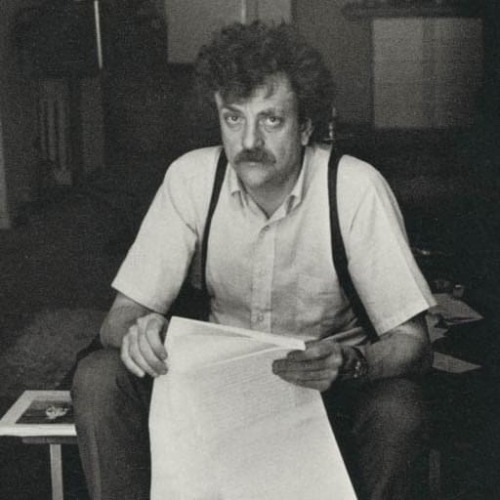
Nimbus Publishing and Vagrant Press Goose Lane Editions Breakwater Books Ltd. The Acorn Press Bouton d'or Acadie Canada Council for the Arts | Conseil des arts du Canada









Shokugeki no Sanji Chapter 2
how to stay motivated as a writer
reread your old writing
reread the scenes you’re most proud of
write something silly. it doesn’t need to be logical, or something you in your story. write something dumb
compare your old writing to your current writing. seeing how much you’ve improved can be very motivating
create AUs for your stories! explore storylines that otherwise never would make it into the story, but you would like to play around with
choose one of your least favorite scenes and rewrite it
act out your scenes
read old comments from people praising your work
create a playlist for your wip
team up with a friend, create AUs for each other’s stories
create playlists for your characters
draw your ocs/make memes of your ocs
draw/make memes of your friend’s ocs
don’t push yourself to get back into writing the thing that made you stop in the first place, you can always write something else!
write what you want to write, no matter how cliché it might be. it's okay
take a break, focus on another hobby of yours. consume other sources of media, or take a walk to clear your head
no need to write in chronological order if it isn’t working for you!
read bad reviews of books/movies/tv-shows. you will start appreciating your own writing more
create a new storyline, or introduce a new character! anything that helps bring something fresh into your story. could even be a completely new wip!
not writing every day doesn’t make you a bad writer. take a break if you feel like you need one
remind yourself to have fun. start writing and don’t focus too much of your attention on following ''the rules.'' you can get into the nitty-gritty when you're more familiarized with writing as an art. or don’t. it’s fiction, you make your own rules
get some rest. go to sleep, take a nap!
remember why you started. know that you deserve to tell the story you want to tell regardless of the skill you possess
things people do in real world dialogue:
• laugh at their own jokes
• don’t finish/say complete sentences
• interrupt a line of thought with a sudden new one
• say ‘uh’ between words when unsure
• accidentally blend multiple words together, and may start the sentence over again
• repeat filler words such as ‘like’ ‘literally’ ‘really’ ‘anyways’ and ‘i think’
• begin and/or end sentences with phrases such as ‘eh’ and ‘you know’, and may make those phrases into question form to get another’s input
• repeat words/phrases when in an excited state
• words fizzle out upon realizing no one is listening
• repeat themselves when others don’t understand what they’re saying, as well as to get their point across
• reply nonverbally such as hand gestures, facial expressions, random noises, movement, and even silence
A pretty cool list of questions for your characters. Personally, I've been doing this by having it in an interview style series of questions for my character, Ktangha.
Some tips for using a few words to describe voices:
1. Tone Words: Use tone words to convey the emotional quality of a voice. For example, you can describe a voice as "melodic," "soothing," "sharp," "gentle," or "commanding" to give readers a sense of the tone.
2. Pitch and Range: Mention the pitch and range of the voice. Is it "deep," "high-pitched," "raspy," or "full-bodied"? This can provide insight into the character's age, gender, or emotional state.
3. Accent and Diction: Describe the character's accent or diction briefly to give a sense of their background or cultural influences. For instance, "British-accented," "Southern drawl," or "formal."
4. Volume: Mention the volume of the voice, whether it's "whispering," "booming," "murmuring," or "hushed."
5. Quality: Use terms like "velvet," "silken," "gravelly," "honeyed," or "crisp" to convey the texture or quality of the voice.
6. Rate of Speech: Describe how fast or slow the character speaks, using words like "rapid," "slurred," "measured," or "rambling."
7. Mood or Emotion: Indicate the mood or emotion carried by the voice. For example, a "quivering" voice may convey fear or anxiety, while a "warm" voice may express comfort and reassurance.
8. Resonance: Describe the resonance of the voice, such as "echoing," "nasal," "booming," or "tinny."
9. Timbre: Mention the timbre of the voice, using words like "rich," "thin," "clear," or "smoky."
10. Cadence: Highlight the rhythm or cadence of speech with descriptors like "staccato," "lilting," "rhythmic," or "halting."
11. Intonation: Convey the character's intonation by saying their voice is "sarcastic," "apologetic," "confident," or "questioning."
12. Vocal Characteristics: If applicable, mention unique vocal characteristics, like a "lisp," "stutter," "drawl," or "accented 'r'."
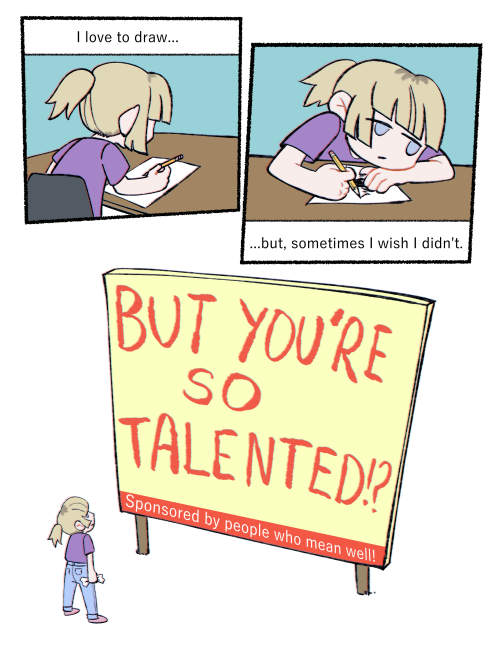
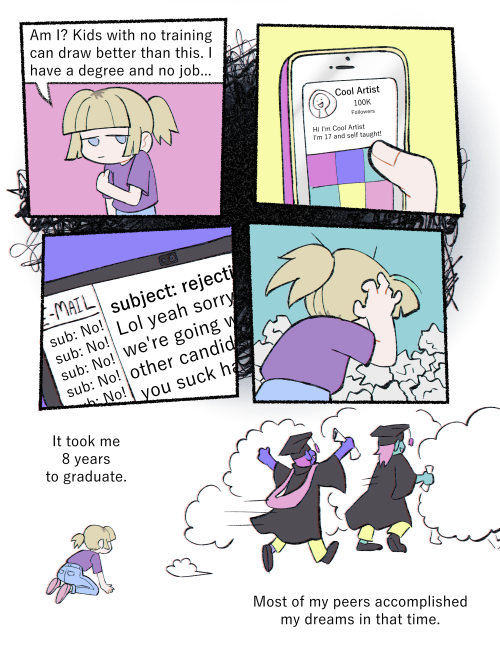

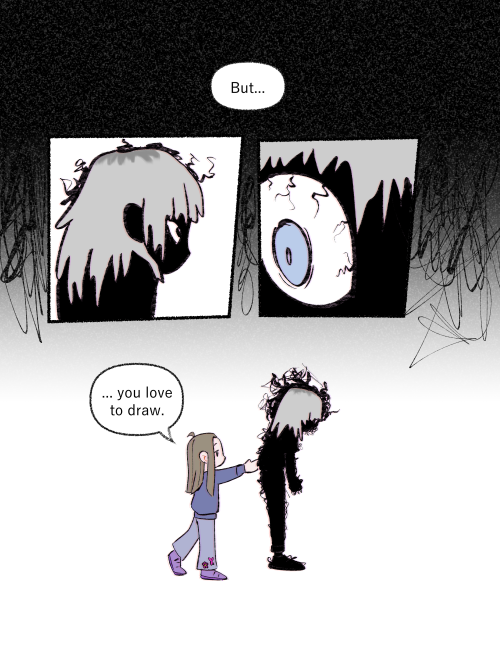
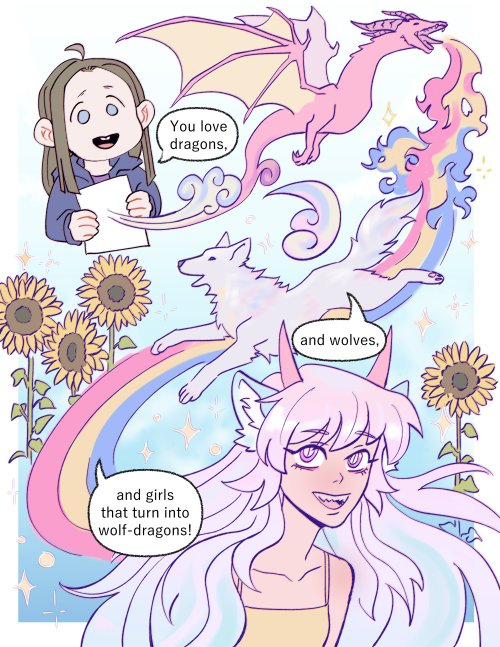
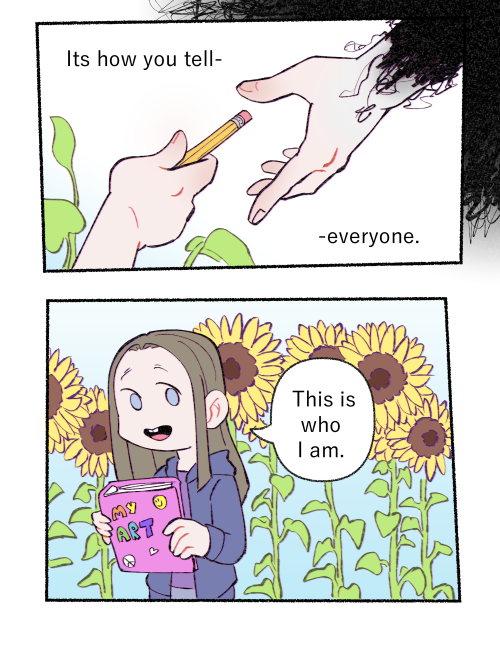

A comic to try and sort through some difficult feelings about being an artist and a reminder to not forget who you are.
my favorite free tools for writers
hello, hello! hope you're doing well.
today i am bringing you another list with my top 3 favorite (free!) tools that I find helpful for each phase of writing a novel.
brainstorming phase
Fantasy Names Generator - not only for fantasy (you can also generate real names). this website is just... amazing! it helps you come up with names for characters, places and locations, descriptions, generate traits, outfits (yes, outfits!!), and probably something else you could ever think of.
The Story's Hack - this one is so cool! you can generate names for everything, create your own generator, and practice writing through writing exercises! plus, you can save your generated names to see later, and you earn coins for each idea generated (you can later buy themes - dark, snow, forest, etc)
RanGen - my last favorite generator on this list is RanGen! you can generate plots, appearances, archetypes, love interests, cities, worlds, items, and more.
developing the idea phase
Bryn Donovan - in this blog you can find master lists under the tag "master lists for writers". it is so helpful when you first start developing the characters and need to find the right words to describe them and to find some quirks and flaws!
Writers Write (350 character traits) - again, this is so helpful!
Story Planner - ah, the number of times I've talked about this website... please, PLEASE take a look at it, you won't regret it. this website has literally everything you need to fully develop your idea with outlines for you to fill in step by step.
writing phase
Colleen Houck (80+ barriers to love) - need more romace conflict? there you go!
Cheat Sheets for Writing Body Language - so, you know how your character's feeling, but don't know how he'd physically act? check out this list!
Describing Words - honestly, this is a lifesaver. don't you struggle to find the right word to describe something? well, with this website all you have to do is to type the object you're trying to describe and see which description fits better to you!
revising phase
Language Tool for Google Docs - i know we all have heard about google docs before, but the truth is, it's almost impossible to find free softwares to check grammar and spelling. so, google docs is useful, because it automatically revises it for us, and it's completely free. plus, you can add adds-on, such as "language tool".
Unfortunately, there's only one (free) tool that I actually enjoy for the revising phase. if you know some others, please let me know so that I can try them out and feature in this list.
exporting phase
Google Docs - i find google docs very easy to format and export to .epub, so i'd recommend using it as a free tool.
Reedsy - this is also a free tool available online. all you have to do is to write down each chapter (copy and paste) or import your word document. it will format the document to your liking and export it to pdf, epub and mobi.
that's everything for now! i hope this post was somehow helpful or inspiring!
if you want to see more master lists full of resources, check these:
WEBSITES FOR WRITERS {masterpost}
BEST accounts to follow as a writer
BEST SITES & SOFTWARES TO WRITE FICTION
DIALOGUE IDEAS TO GET RID OF THAT WRITING BLOCK (masterpost)
Useful Resources & Tips for Writers
also, if you are a notion lover just like me, check the free template I just released with everything you need to develop and write your novel!
thank you so much for reading! hope to see you around, and have a nice day <3
A Few Tips On Writing Chapters
Give each chapter a descriptive title.
Especially if you find yourself at sea when deciding how exactly to chop your story into pieces. Even if you don’t want to use chapter titles in your final draft, they’re of enormous use when you’re still figuring out exactly what the shape of your story is. By giving your chapter a descriptive title, you’re giving your chapter a focus and a particular story for your chapter to tell.
Make sure each chapter has its own self contained narrative arc.
This is not to say that every novel must be episodic, but that each section should have its own beginning, middle, and end. It should have set up, build up, and resolution. It should ask a question an implicit question at the beginning and provide a slightly more explicit answer at the end.
Example: one chapter in my book is just 500 words. Two new characters drive into town, get out of a car, knock on a door, and they say their names. The beginning is the introduction of the mystery of these characters. It’s the question “who are these people?” As they drive, you see them and where they are going, which builds towards the answer. As a resolution, you get their names.
You wouldn’t call this a “short story” by any means, but it does have a firm beginning, middle, end. It is a contained unit.
A chapter break can–and sometimes should–come in the middle of a scene.
Twists and cliffhangers can appear at the end of novels, so it would be silly to say you couldn’t end a chapter that way, too. Cliffhangers and twists are usually both a result of other plot points, and the cause of a new problem. Narratively, they function both as the ending of one thing and the beginning of another, so they make for great chapter breaks. Separating the scene at a cliffhanger is often better/cleaner than lumping the entire scene into one chapter.
Example: Alex is warned to stay away from a dangerous cliff. Alex gets adventurous and wanders toward cliff. Alex falls off of cliff. Beginning. Middle. End.
Alex is actually hanging from cliff! Alex figures out a way to get back to solid ground, struggles. Alex makes it back to solid ground. Beginning. Middle. End.
You want your readers to “just one more chapter!” their way through your book. Stuffing moments of high tension into the middle of chapters that resolve neatly won’t keep them turning pages.
Always end your chapters on a point of intrigue.
Using points of tension to bookend chapters is important because chapter endings are usually where readers put a book down during a reading session. They’re very naturally places to close the cover and walk away.
As a writer, you don’t want this. You absolutely don’t want to give your reader great places to put the book down, because you need them to pick the book up again as soon as possible. Not the next day, or the next week, (or never), but while they have a spare minute during their commute, or during their lunch break, or under their desk in class.
You want to encourage this by taking that perfectly natural endpoint, that place they expect to be able to put the book down, and forcing them to take even a tiny peak at the next chapter.
This doesn’t mean ending every chapter on a verifiable cliffhanger, but there has to be something. A character can solve a mystery. A new character can appear. There can be a moment of irony. A new idea. Just so long as it’s something that will make the reader think “I need to know what happens next.”
Character is Plot
Character is plot. I mean that as, your main character’s arc is (literally) the main plot. If you think about arcs as something to put over or alongside an existing plot, they probably aren’t working very well. Or at least, you don’t have as much time or space as you need to fully explore both a good plot and a good arc. They are one of the same, so I’d even say throw whatever idea you have about plot out the window. They’re called arcs now. Congrats.
This also means if your characters aren’t working, the whole thing is going to fall apart. So I’m going to relay what was taught to me about solid character creation, and finding your arc!
There’s five critical things that go into character building: Goal, Objective, Unconscious Need, Disrupting Characteristic, and a Formative Event. They all work very closely together, so once you get one going, the others typically fall into place. (oh, and they sound complicated, but I promise they’re not.)
Goal and Objective go hand in hand, I’m sure you’re telling me right now that actually they’re the same thing. You’re right, they kind of are. The reason I split them up is so I make sure I always get not only a journey for my character to go on, but a meaning behind it. Action and intention. So:
Objective: the actionable (your character can work at it) objective of the story. What your character is physically doing throughout the story. Frodo taking the ring to Mordor is his Objective, Rapunzel going to see the lanterns in Tangled. Mulan protecting her dad by taking his place. Essentially, objective is what we’ve thought of as plot.
Goal: the intention behind the objective. Why is your character doing this? This is usually the emotional core of the story, where we tuck away arc and characterization. Rapunzel wants to see the lanterns to finally get out and start her life. Mulan wants to prove she’s worthy. Your character wants to make someone proud, or hurt someone who’s hurt them, or feel loved. This is the emotion behind their objective and cannot on its own be turned into an arc. One cannot ‘prove themselves worthy’ out of a void, that’s the goal, you also need an objective, ‘prove themselves worthy through taking their father’s place in the war’.
If you have these, great job! You’ve got a really solid foundation for your arc. What your character wants, and why they want it. However, if we just follow an objective and goal, your characters are going to feel very lifeless—so we need some additional depth:
Unconscious need: This will probably be the one you get stuck on the most. Good thing is, both of these words are hints on what to do here, Unconscious meaning your character doesn’t realize it, couldn’t put it into words, and Definitely doesn’t say it out loud. Need, is the start of how to answer this blank space. Your character needs to realize something they haven’t been aware of to achieve their goal. Or they need to realize a flaw in their goal. For example, a woman wants to run for president (objective) to make her mother proud (goal), but she needs to realize all her mother wants is to spend more time with her, and by using all her time to campaign for president, she’s actually splitting them further apart. Mulan needs to internalize that she doesn't have to be bigger than life to make her parents proud of her and bring them honor.
Your need is character specific, which means no one else should need the same thing. If your need can apply to multiple people, you probably didn’t get specific enough. Everyone needs to be loved, everyone needs to feel cared for. However, not everyone closed themselves off from relationships and needs to open up to people if they want to foster a connection. See the difference?
This step will directly influence how you write your climax, because it leads to a choice your character makes. They can either realize their need and adhere to it (Fine, I’ll take my name out of the campaign for president/call my parents/apologize to the people I’ve hurt) or continue with their objective despite it. Typically, characters that ignore their need after they realize it are considered to have tragic arcs. Getting your character to realize their need is the end of their positive arc, it’s what we’ve been working towards all along.
So it’s important. Don’t skip, yes?
Disrupting Characteristic: this one is fun. This step is adding a flaw to your character, specifically, it’s the flaw that’s holding them back from meeting their need. If there was nothing holding them back, wouldn’t they be satisfied already? So that’s the easiest place to start with this one, what they need, and what could possibly be holding them back from it. If they need to see their father as he truly is, maybe their disrupting characteristic is that they’re optimistic to a fault. This characteristic could be a thing the character does (idolizes their father, acts fiercely independent, etc.) or a belief they have about themselves or the world (self conscious, believes humans are inherently cruel, etc.) It’s the epitome of their internal conflict, they need something, but some ingrained part of them is keeping them from it. Evil? Absolutely. But us writers tend to be.
The disrupting characteristic is the internal arc your character goes through, they are working and being challenged throughout the story to overcome this characteristic. So in another example, a romantic character may realize their parents led them to believe they were undesirable (unconscious need), and that it has no merit, so they gain a new confidence and overcome their self consciousness (disrupting characteristic) to ask their ideal partner out.
You see what I mean why I say all these steps work together. Need and disrupting characteristic and goal are so intertwined that it can be difficult sometimes to voice them apart from each other, but they also can’t carry each other. A solid need and disrupting characteristic isn’t going to do much if you don’t have a very convincing goal. Make sure you can put them into words (preferably write them down) and voice them all as separate things from each other, and how they work together. If you can do that, you’re set.
Last but not least is Formative Event: this is essentially your beginnings of backstory. The formative event Is the (usually) singular event in a character’s past that made them to be who they are today—importantly, that developed their need and disrupting characteristic. Your character showed up to school in their new dress and was bullied, a mom left, or a dog died. The reason they are the way that they are. From this, you can build up the rest of their backstory. Moana is chosen by the ocean, her parents try to keep her away from the ocean, she grows up unsure about the idea of being the next chief. If you’re struggling with backstory, start here, build around it.
(Oh, and you don’t necessarily have to mention the formative event in your story, in fact most screenplays don’t. As long as you know it, you’re set.)
Speaking of backstory, it’s our invisible sixth step (or… first, really) because all of these things you come to know about your character is developed out of backstory (which makes it a pretty good place to start). It makes sense, really, if these steps are who they are, they’ve become that way because of where they’ve come from. I tend to start with family when I’m trying to discover backstory, given family is a large part of who we are—then education, then home/community, friends, interests, etc. But there’s no real ‘perfect’ way to do it. Just write, let your mind wander, add and take away whatever you want, and meet your new character for the first time.
So how did all of that give you your plot? It’s through how they change! We’ve created someone who wants something, and needs something else, and unless we take them on a journey so they can figure it out, we’ll never have a story. So that journey to help them realize their need? That’s your plot.
If you’re struggling with how to help them change, consider putting your arc into a logline (something screenwriters do, but I find it really helpful even in novel writing). A logline is essentially your plot (character arc) summed up in a sentence or two. It goes like this: A but B so C
A: Disrupting characteristic
but
B: Conflict (goal/objective meets antagonist)
so
C: Changed character
Loglines are a tool for writing (at least in the way we’re using them), so make sure you have your full story—ending, character change, conflict, anything you’d find helpful to keep you on track.
I’ll often write a logline for each major character I have. Here’s an older one about a character I’ll call “Mark”:
A: Obsessive
B: His death has been predicted
C: Opens up to the others, recognizes he only has a little bit of time left, and should spend it with the people he loves (that’s also his need!)
Logline: Private Mark Jackson obsesses over an unproven myth that promises the escape of his small life, but when his untimely death is foretold and every day drives him closer to his fate, he opens up to his friends to be content in a slightly different life than he had imagined for himself.
Loglines are great because they have it all!
Private (additional characteristic) Mark Jackson obsesses (disrupting characteristic) over an unproven myth (objective) that promises the escape of his small life (goal), but when his untimely death is foretold and every day drives him closer to his fate (conflict), he opens up to his friends (need) to be content in a slightly different life than he had imagined for himself (change).
You see how the entire story is right there in that sentence? This is a great place to start before we move onto officially outlining next week, so save your work, we’ll come back to it!
To get a good handle on all this, I’d recommend watching your favourite movies or reading your favourite book and filling out as many steps as you can, then creating loglines for each major character. Disney movies especially stick to this structure (thus all the examples) and typically have very clear arcs, but anything works.
Good luck!
-
 forza-hamilton liked this · 3 weeks ago
forza-hamilton liked this · 3 weeks ago -
 cremebrulee-69 reblogged this · 4 weeks ago
cremebrulee-69 reblogged this · 4 weeks ago -
 cremebrulee-69 liked this · 4 weeks ago
cremebrulee-69 liked this · 4 weeks ago -
 antihell liked this · 1 month ago
antihell liked this · 1 month ago -
 yamishika liked this · 1 month ago
yamishika liked this · 1 month ago -
 lucinaswirlwriter reblogged this · 1 month ago
lucinaswirlwriter reblogged this · 1 month ago -
 lucinaswirl liked this · 1 month ago
lucinaswirl liked this · 1 month ago -
 sewriting reblogged this · 1 month ago
sewriting reblogged this · 1 month ago -
 vesanalt reblogged this · 1 month ago
vesanalt reblogged this · 1 month ago -
 chosotallgf liked this · 1 month ago
chosotallgf liked this · 1 month ago -
 badojandpancakes liked this · 1 month ago
badojandpancakes liked this · 1 month ago -
 shadydetectivecollector liked this · 1 month ago
shadydetectivecollector liked this · 1 month ago -
 sandramiksaauthor liked this · 1 month ago
sandramiksaauthor liked this · 1 month ago -
 crypticrisps liked this · 1 month ago
crypticrisps liked this · 1 month ago -
 daandism liked this · 1 month ago
daandism liked this · 1 month ago -
 vesanal liked this · 1 month ago
vesanal liked this · 1 month ago -
 write-with-will liked this · 1 month ago
write-with-will liked this · 1 month ago -
 teegeeteegee liked this · 1 month ago
teegeeteegee liked this · 1 month ago -
 literaryvein-basics reblogged this · 1 month ago
literaryvein-basics reblogged this · 1 month ago -
 raynethescribe reblogged this · 2 months ago
raynethescribe reblogged this · 2 months ago -
 maudlin-scribbler liked this · 3 months ago
maudlin-scribbler liked this · 3 months ago -
 doedotdoc reblogged this · 3 months ago
doedotdoc reblogged this · 3 months ago -
 abelsdove liked this · 3 months ago
abelsdove liked this · 3 months ago -
 petrichorade liked this · 5 months ago
petrichorade liked this · 5 months ago -
 chickenlittleabig liked this · 5 months ago
chickenlittleabig liked this · 5 months ago -
 air-rebels liked this · 6 months ago
air-rebels liked this · 6 months ago -
 hailssstorm88 reblogged this · 6 months ago
hailssstorm88 reblogged this · 6 months ago -
 lune-versatile reblogged this · 6 months ago
lune-versatile reblogged this · 6 months ago -
 lune-versatile liked this · 6 months ago
lune-versatile liked this · 6 months ago -
 arsvenal liked this · 7 months ago
arsvenal liked this · 7 months ago -
 dial-me-seventy-three reblogged this · 7 months ago
dial-me-seventy-three reblogged this · 7 months ago -
 idkwritingstuff reblogged this · 7 months ago
idkwritingstuff reblogged this · 7 months ago -
 jfictitional reblogged this · 7 months ago
jfictitional reblogged this · 7 months ago -
 ladyisabelsblade reblogged this · 8 months ago
ladyisabelsblade reblogged this · 8 months ago -
 tha101 reblogged this · 8 months ago
tha101 reblogged this · 8 months ago -
 tha101 liked this · 8 months ago
tha101 liked this · 8 months ago -
 whoneedsleepanyway liked this · 8 months ago
whoneedsleepanyway liked this · 8 months ago -
 jfictitional liked this · 8 months ago
jfictitional liked this · 8 months ago -
 fanwriting93 reblogged this · 8 months ago
fanwriting93 reblogged this · 8 months ago -
 cheese-nips-writes reblogged this · 8 months ago
cheese-nips-writes reblogged this · 8 months ago -
 themaliciousravioli liked this · 8 months ago
themaliciousravioli liked this · 8 months ago -
 roughknight5 liked this · 8 months ago
roughknight5 liked this · 8 months ago -
 stressed2obsessed liked this · 8 months ago
stressed2obsessed liked this · 8 months ago -
 the960writers reblogged this · 8 months ago
the960writers reblogged this · 8 months ago -
 unknown-entity-090 reblogged this · 8 months ago
unknown-entity-090 reblogged this · 8 months ago
